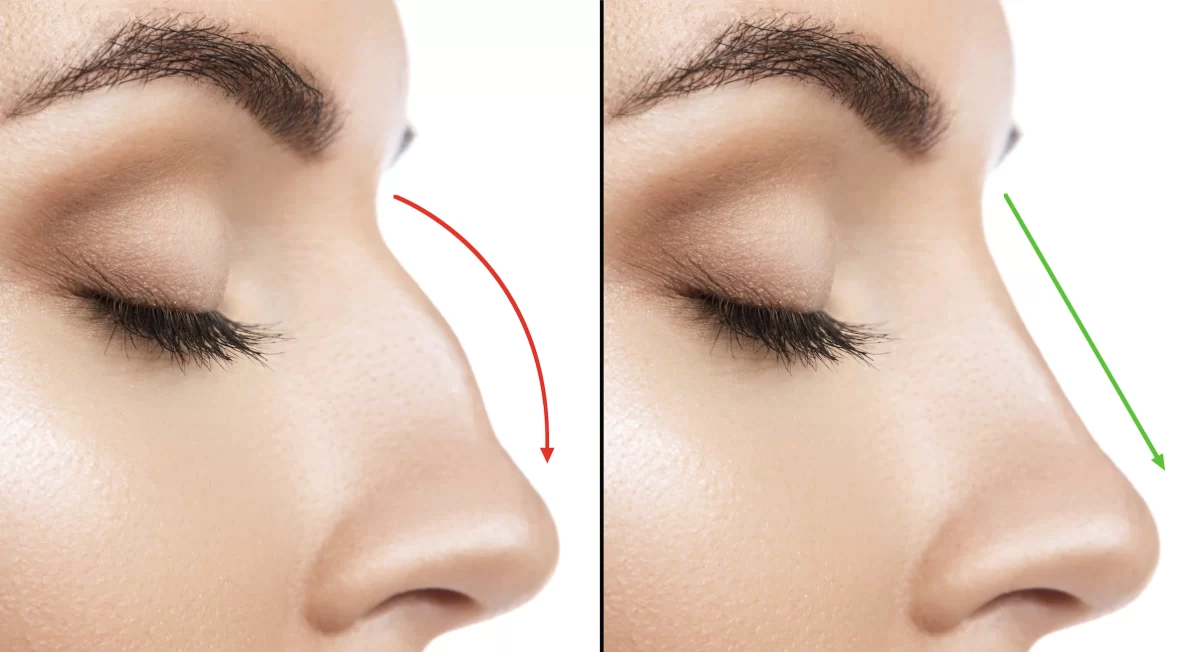When it comes to enhancing one’s appearance or correcting a physical imperfection, a plastic surgeon is a professional who can make a significant impact. Whether it’s reconstructive surgery to address trauma or cosmetic procedures to enhance the body’s aesthetic appeal, a plastic surgeon is a highly trained and skilled medical professional who can help people feel better about themselves.
In this article, we will explore the role of a plastic surgeon, the different types of plastic surgery, and how to choose the right surgeon for your needs.
What is a Plastic Surgeon?

A plastic surgeon is a medical professional who specializes in performing surgical procedures to repair or enhance a person’s physical appearance. These surgeons are highly trained and have years of experience in performing complex procedures, such as reconstructive surgeries after accidents or cosmetic surgeries to improve one’s physical features.
Types of Plastic Surgery

There are two types of plastic surgery: reconstructive and cosmetic. Reconstructive surgery is performed to repair or restore function to an area of the body that has been affected by an injury, illness, or congenital disability. Cosmetic surgery, on the other hand, is performed to improve a person’s appearance, although it may also have functional benefits.
Some of the most common procedures performed by plastic surgeons include:
Reconstructive surgery: This type of surgery involves repairing deformities or restoring function to body parts that have been damaged due to injury, disease, or birth defects. For example, plastic surgeons may perform breast reconstruction after a mastectomy or repair cleft lip and palate.
Cosmetic surgery: This type of surgery involves improving a person’s appearance by altering the shape, size, or contour of a body part. Common cosmetic procedures include breast augmentation, rhinoplasty (nose job), liposuction, facelifts, and tummy tucks.
Hand surgery: This type of surgery involves repairing injuries or deformities in the hands, including carpal tunnel syndrome, trigger finger, and Dupuytren’s contracture.
Microsurgery: This type of surgery involves using specialized techniques to repair small blood vessels and nerves, typically in the hands or feet.
Plastic surgeons are highly trained medical professionals who must complete extensive education and training to become certified in their field. They must have a deep understanding of anatomy, physiology, and surgical techniques to perform procedures safely and effectively. In addition to performing surgeries, plastic surgeons may also provide non-surgical treatments such as Botox injections, dermal fillers, and chemical peels to enhance a person’s appearance.
Common Types of Reconstructive Plastic Surgery:
- Breast reconstruction after mastectomy
- Cleft lip and palate repair
- Burn and trauma repair
- Hand surgery for injuries or deformities
Common Types of Cosmetic Plastic Surgery:
- Breast augmentation or reduction
- Rhinoplasty (nose job)
- Liposuction
- Facelift
- Tummy tuck
- Choosing the Right Plastic Surgeon
How To Choose Plastic Surgeon?
Choosing the right plastic surgeon is critical to achieving the desired results and ensuring a safe surgical experience. Here are some factors to consider when choosing a plastic surgeon:
- Board Certification: Make sure the surgeon is board-certified by the American Board of Plastic Surgery (ABPS) or the Royal College of Physicians and Surgeons of Canada (RCPSC). This certification indicates that the surgeon has undergone extensive training and passed rigorous exams.
- Experience: Look for a surgeon who has experience performing the type of surgery you need. Ask to see before-and-after photos of previous patients and read reviews from past clients.
- Personal Connection: It’s essential to feel comfortable with your plastic surgeon and have a good rapport. Choose a surgeon who listens to your concerns and answers your questions thoroughly.
- Facility Accreditation: Make sure the surgical facility where the surgery will be performed is accredited by a recognized accrediting organization, such as the Accreditation Association for Ambulatory Health Care (AAAHC) or the Joint Commission.
Plastic surgeon is a highly trained and skilled medical professional who can make a significant impact on a person’s physical appearance and self-esteem. Whether you need reconstructive surgery to repair an injury or cosmetic surgery to enhance your appearance, choosing the right surgeon is crucial to achieving the desired results. By considering factors such as board certification, experience, personal connection, and facility accreditation, you can choose a plastic surgeon who will provide safe and effective care.
What Does Plastic Surgeon Do?
A plastic surgeon is a medical professional who specializes in performing surgical procedures to repair, reconstruct, or enhance a person’s physical appearance. Their goal is to improve the function or appearance of a specific body part to improve the overall well-being of their patients.
What Is Plastic Surgery Called?
Plastic surgery is a medical specialty that focuses on reconstructing, repairing, or enhancing a person’s physical appearance. The term “plastic” in plastic surgery comes from the Greek word “plastikos,” which means to shape or mold. Therefore, plastic surgery involves shaping or molding body tissues to improve their function or appearance.
Plastic surgery is sometimes referred to as “cosmetic surgery” when it is performed for aesthetic purposes. However, plastic surgery also includes reconstructive surgery, which is performed to restore function or appearance to a body part that has been damaged due to injury, disease, or congenital disability.
Examples of plastic surgery procedures include breast augmentation, rhinoplasty (nose job), liposuction, facelifts, tummy tucks, and reconstructive surgery after cancer treatment, trauma, or congenital anomalies.
How Many Years Takes to Be a Plastic Surgeon?
To become a plastic surgeon, it typically takes a minimum of 13 years of education and training after high school. This includes:
Bachelor’s degree: 4 years of undergraduate education in a related field, such as biology, chemistry, or pre-med.
Medical school: 4 years of medical school to earn a Doctor of Medicine (MD) or Doctor of Osteopathic Medicine (DO) degree.
Residency: 6-8 years of residency training in general surgery and plastic surgery. This includes a minimum of three years of general surgery training and three years of plastic surgery training.
Fellowship (optional): After completing residency, some plastic surgeons choose to complete an additional 1-2 years of fellowship training in a subspecialty area of plastic surgery, such as hand surgery or microsurgery.
After completing the required education and training, aspiring plastic surgeons must also pass the licensing exams to obtain their medical license and become board-certified in plastic surgery by the American Board of Plastic Surgery (ABPS) or the Royal College of Physicians and Surgeons of Canada (RCPSC).
Becoming a plastic surgeon requires a significant commitment of time, effort, and dedication. However, it is a rewarding profession that allows individuals to make a positive impact on their patients’ lives by improving their appearance, function, and quality of life.
How Is Plastic Surgery Done?
Plastic surgery is a medical specialty that involves reconstructing, repairing, or enhancing a person’s physical appearance. The specific technique used during a plastic surgery procedure will depend on the type of procedure being performed and the individual needs of the patient. However, in general, plastic surgery procedures follow a similar process:
Anesthesia: Before the surgery begins, the patient will be given anesthesia to ensure they do not feel any pain or discomfort during the procedure. The type of anesthesia used will depend on the type and length of the surgery, as well as the patient’s medical history.
Incision: The surgeon will make an incision in the skin to access the underlying tissues. The location and size of the incision will depend on the type of procedure being performed.
Tissue manipulation: Once the incision is made, the surgeon will manipulate the underlying tissues to repair, reconstruct, or enhance the targeted body part. This may involve removing excess tissue, reshaping or repositioning tissues, or adding synthetic materials to augment the area.
Closure: After the procedure is complete, the surgeon will close the incision using stitches, sutures, or surgical tape. In some cases, drains may be inserted to help remove excess fluid or blood from the area.
Recovery: After the surgery is complete, the patient will be taken to a recovery area where they will be monitored closely by medical staff. Depending on the type of procedure, the patient may need to stay in the hospital for a few days or may be able to go home the same day.
The recovery process after plastic surgery will vary depending on the type and extent of the procedure. Patients will typically experience some pain, swelling, and bruising after surgery, and will need to follow their surgeon’s instructions for post-operative care to ensure a safe and successful recovery.
- Vitamin B12 Deficiency Symptoms On Skin May Leads To Major Diesease
- Effective Home Remedies for Tinnitus Treatment: Natural Solutions for Ringing Ears
- Which Specialized Doctor Is Best To Consult For Gaining Weight?
- Advanced Psoriasis Treatment Strategies for Lasting Results
- How to Manage Stress: Tips for Reducing Anxiety and Improve
- Plastic Surgeon: A Guide to Understanding the Role and Importance of this Medical Profession
- Foxtale Vitamin C Serum: The Ultimate Solution for Bright, Radiant Skin
- Understanding the Importance of Gallbladder Function
- How Can I Get OPD Appointment In AIIMS Gorakhpur?
- Which Doctor Should You Consult For Hearing Problem?















